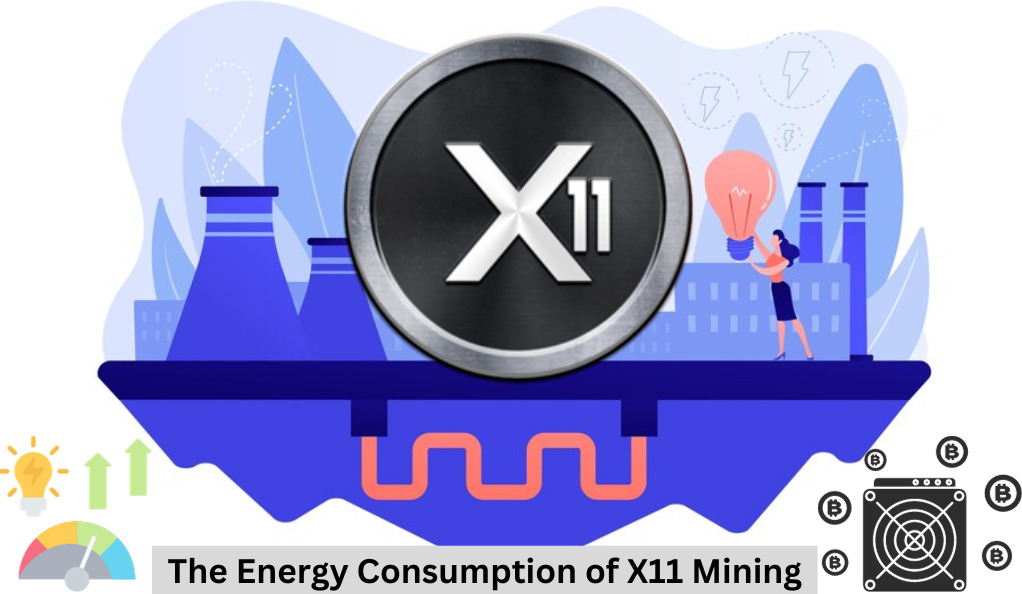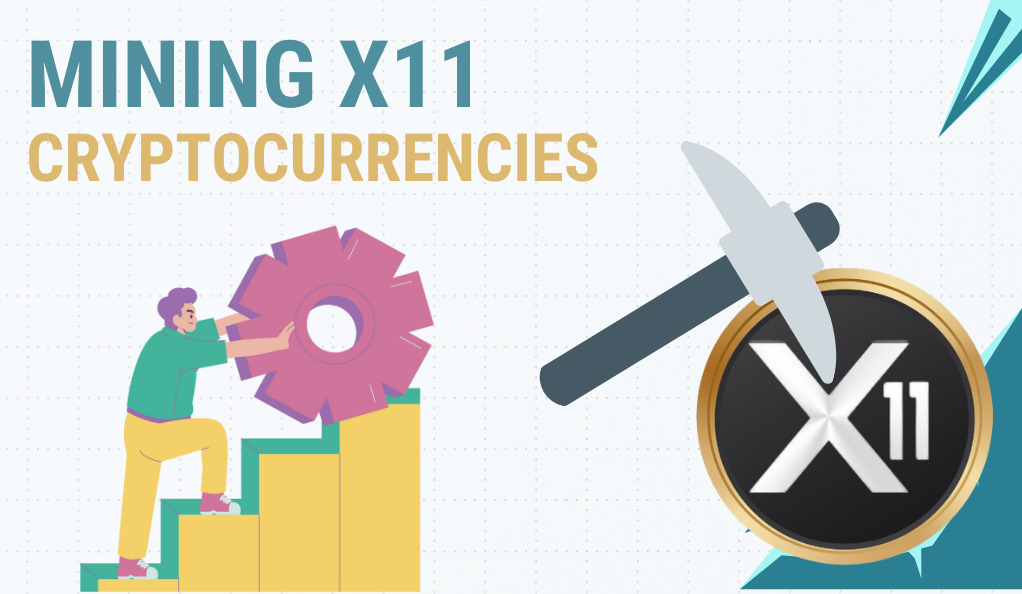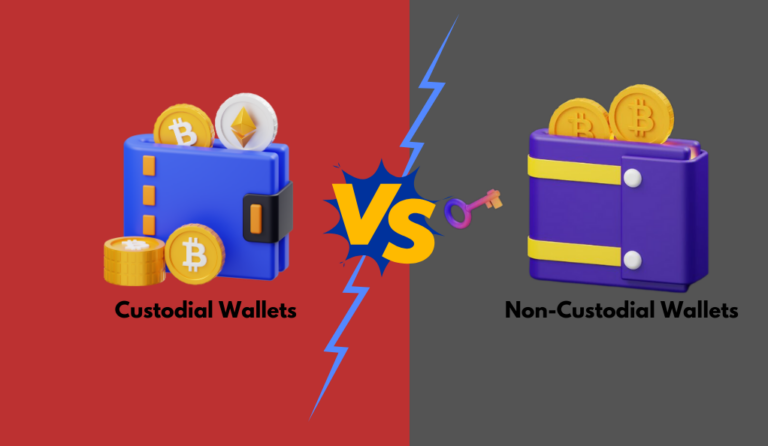In the vast and intricate world of cryptocurrencies, the foundation of any digital currency lies in the algorithms that drive them. One such algorithm that has garnered significant attention in the crypto community is the X11 algorithm. But what exactly is X11, and why is it so significant?
What is X11?
X11 is a unique cryptographic hashing method used for proof-of-work purposes in the mining of certain cryptocurrencies. Named for its use of 11 different hashing functions, X11 is designed to offer a higher level of security and efficiency compared to other algorithms. Its multi-layered approach makes it more resistant to potential vulnerabilities, ensuring the stability and security of the cryptocurrencies that employ it.
Popular Cryptocurrencies Using X11
Several cryptocurrencies have adopted the X11 algorithm, with Dash (DASH) being the most notable. Dash, initially known as XCoin and later as Darkcoin, was one of the pioneers in using the X11 algorithm, setting a precedent for other cryptocurrencies to follow. Other notable X11 cryptocurrencies include PACcoin (PAC), Polis (POLIS), MonetaryUnit (MUE), and CannabisCoin (CANN), among others.
| Cryptocurrency | Symbol |
|---|---|
| Dash | DASH |
| PACcoin | PAC |
| Polis | POLIS |
| MonetaryUnit | MUE |
| CannabisCoin | CANN |
Why X11?
The X11 algorithm and the cryptocurrencies based on it are a direct response to the expansion of ASIC (Application-Specific Integrated Circuit) crypto miners. ASIC miners, while efficient, have raised concerns about centralization in the mining process, as they can be expensive and out of reach for average miners. X11, with its 11-fold hashing approach, aims to level the playing field, making mining more accessible and decentralized.
The Rise of Cryptocurrency Mining
Cryptocurrency mining, often simply referred to as “mining,” is the process by which new coins are introduced into circulation within a cryptocurrency network. It involves solving complex mathematical problems using computational power. As the crypto landscape has evolved, so too has the significance and methods of mining.
Evolution and Growth of Crypto Mining
From the inception of Bitcoin in 2009, mining has been an integral part of the cryptocurrency ecosystem. Initially, mining was a hobby for tech enthusiasts, with many using their personal computers to mine new coins. However, as the rewards and value of cryptocurrencies grew, so did the interest in mining. This led to the development of specialized hardware, such as ASIC miners, designed explicitly for mining tasks.

Significance of X11 in the Mining Community
While many algorithms are available for mining, X11 stands out for several reasons:
- Energy Efficiency: X11 is known for its energy-efficient nature compared to other algorithms. This efficiency translates to lower electricity costs for miners, making the mining process more profitable.
- Security: The use of 11 different hashing functions in X11 ensures a higher level of security. This multi-layered approach makes it harder for potential attackers to compromise the system.
- Decentralization: X11’s design aims to prevent the dominance of ASIC miners, promoting a more decentralized mining environment. This ensures that no single entity or group can control a significant portion of the network’s mining power.
Challenges and Innovations
As with any technology, challenges arise. The increasing difficulty level of mining problems requires more computational power, leading to concerns about energy consumption. However, the crypto community is continuously innovating, with advancements like the X11 algorithm aiming to address these challenges head-on.
Legal Frameworks Governing Cryptocurrency Mining
Cryptocurrencies operate in a digital realm, but their implications spill over into the physical world, especially when it comes to legal regulations. As the popularity of cryptocurrencies has surged, so has the attention from regulatory bodies worldwide.
Overview of Global Regulations
Different countries have varying stances on cryptocurrency mining. While some nations have embraced it, offering tax incentives and supportive regulations, others have imposed strict regulations or outright bans. These differing approaches arise from concerns about energy consumption, potential illicit activities, and the desire to protect traditional financial systems.
Specific Laws Pertaining to X11 Mining
Given the unique nature of X11 and its resistance to ASIC dominance, some countries have taken a more lenient approach to X11 mining compared to other algorithms. However, miners still need to be aware of local regulations, ensuring they operate within legal boundaries.
Controversies and Legal Battles
The world of cryptocurrency, while revolutionary and promising, has not been without its share of controversies. X11 mining, given its unique position in the crypto landscape, has also been at the center of several legal debates and battles.
Notable Legal Cases Involving X11 Mining
Over the years, there have been instances where X11 mining operations have come under scrutiny. Some of these cases revolved around unauthorized use of computational resources, where entities covertly used others’ devices for mining, a practice known as cryptojacking. Others pertained to the environmental impact of large-scale mining operations or disputes over mining rewards.
Implications of These Cases for Miners
For miners, these legal battles serve as a reminder of the importance of ethical and transparent practices. Ensuring that mining operations adhere to local regulations, respect environmental guidelines, and prioritize security can mitigate potential legal pitfalls.
Environmental Concerns and Legal Implications
The environmental impact of cryptocurrency mining has been a topic of intense debate. Mining operations, especially those on a large scale, can consume vast amounts of electricity, leading to concerns about carbon footprints and energy wastage.
The Energy Consumption of X11 Mining
While X11 is more energy-efficient than some other algorithms, it’s essential to understand that mining still requires significant power. The exact consumption varies based on the hardware used, the scale of the operation, and other factors.

Legal Challenges Arising from Environmental Concerns
Several countries and regions have expressed concerns about the environmental impact of large-scale mining operations. Some have imposed regulations to limit the energy consumption of mining farms, while others have provided incentives for operations that use renewable energy sources. Miners need to be aware of these regulations and adapt their practices accordingly to avoid legal complications.
Navigating the Regulatory Maze: Tips for X11 Miners
The world of cryptocurrency mining is as rewarding as it is challenging. With the ever-evolving legal landscape, miners need to stay informed and proactive.
Best Practices for Staying Compliant
- Stay Informed: Regularly check for updates in local and international regulations related to cryptocurrency mining.
- Use Renewable Energy: Where possible, consider using renewable energy sources for mining operations. This not only reduces the environmental impact but can also be beneficial from a regulatory standpoint.
- Engage with the Community: Joining mining forums, attending seminars, and participating in discussions can provide valuable insights into best practices and potential regulatory changes.
Potential Legal Pitfalls and How to Avoid Them
- Unauthorized Mining: Ensure that all mining activities, especially those involving third-party resources, have the necessary permissions.
- Environmental Regulations: Stay updated on local environmental guidelines and ensure that mining operations adhere to them.
- Taxation: Understand the tax implications of mining rewards and ensure timely and accurate reporting.
The Future of X11 Mining: Legal Predictions and Trends
Cryptocurrency mining, particularly X11 mining, is in a state of constant evolution. As technology advances and the global perspective on cryptocurrencies shifts, the legal landscape surrounding X11 mining is bound to change. Here’s a glimpse into what the future might hold.
Emerging Regulations and Their Potential Impact
Governments and regulatory bodies worldwide are becoming increasingly aware of the nuances of cryptocurrency mining. As such, we can expect:
Stricter Environmental Guidelines: Given the global emphasis on sustainability, regulations might focus on the environmental impact of mining operations, pushing for greener alternatives.
Clarity on Taxation: As cryptocurrencies gain mainstream acceptance, clearer guidelines on the taxation of mining rewards might emerge.
Regulations on Hardware: With the growth of ASIC mining, there might be regulations governing the manufacture and use of such specialized hardware to ensure a level playing field.
The Evolving Legal Landscape
Several trends are shaping the legal landscape for X11 mining:

- Decentralization Focus: Laws might evolve to promote more decentralized mining practices, ensuring that no single entity has undue control over the network.
- Consumer Protection: With the rise in cryptojacking incidents, there might be stricter laws to protect consumers from unauthorized mining activities.
- International Collaboration: As cryptocurrencies are global by nature, there might be efforts to harmonize regulations across borders, leading to standardized practices.
What It Means for Miners
For those involved in X11 mining, the future promises both challenges and opportunities:
- Adaptability: Miners will need to be agile, adapting to new regulations and technologies to stay ahead.
- Community Engagement: The mining community will play a crucial role in shaping regulations. Active participation in discussions and advocacy can influence policies in favor of miners.
- Innovation: As challenges arise, there will be opportunities for innovation, be it in green mining technologies, decentralized practices, or security measures.
Conclusion
The realm of X11 cryptocurrency mining is a dynamic intersection of technology, finance, and law. As it continues to evolve, miners face both challenges and opportunities, shaped by technological advancements and shifting regulatory landscapes. Staying informed and adaptable is crucial for success in this ever-changing environment.
In the broader context, X11 mining is a testament to the innovative spirit of the crypto community. It embodies the continuous pursuit of security, efficiency, and decentralization. As we look to the future, the lessons and experiences from X11 mining will undoubtedly influence the next chapters of the cryptocurrency story.
At axerunners.com, our goal is to furnish well-rounded and trustworthy information regarding cryptocurrency, finance, trading, and stocks. Nonetheless, we avoid providing financial advice and instead encourage users to conduct their own research and meticulous verification.
Read More













